Siting Art in the Garden
 Our region is abuzz about art. Swarthmore College is preparing for Arts Weekend on campus. The city of Philadelphia is preparing for the opening of the Barnes Foundation on the Benjamin Franklin Parkway. Here at the Scott Arboretum, we have finalized our Art in the Garden brochure.
Our region is abuzz about art. Swarthmore College is preparing for Arts Weekend on campus. The city of Philadelphia is preparing for the opening of the Barnes Foundation on the Benjamin Franklin Parkway. Here at the Scott Arboretum, we have finalized our Art in the Garden brochure.
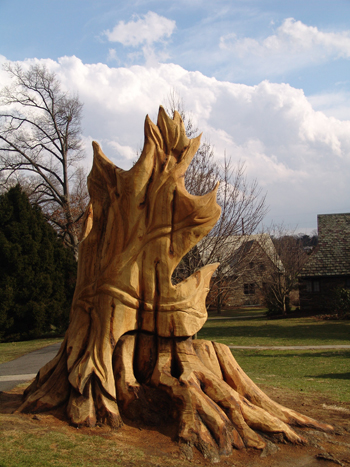
A temparory art installation the Bender Oak. photo credit: R. Maurer
Art and the garden are creative complements. With successful placement and integration, sculpture in a garden enhances our appreciation of both the changing garden and the unchanging character of the sculpture.
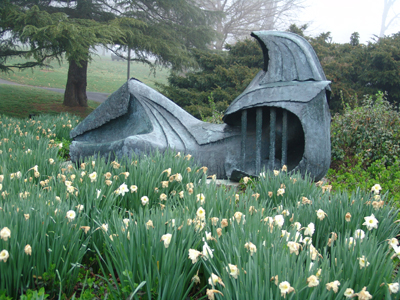
Sappho reclines among fading daffodils near Sharples Dinning Hall. photo credit: R. Robert
There are some key considerations when siting art in the garden.
1. Scale: The challenge is to site the art in scale to its surroundings.
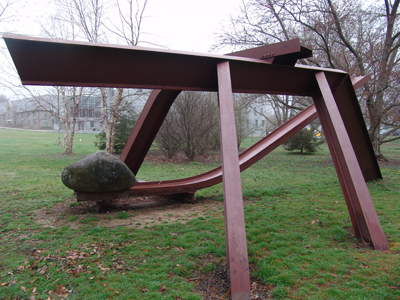
Slide Rock is located on the end of Mertz Lawn near the Alice Paul Residence Hall. photo credit: R. Robert
For example, the piece Slide Rock was originally located in the John W. Nason Garden. This large structure felt wedged into the smaller scale garden between four buildings. The piece can now be found on Mertz lawn. Here the large sweeping lawn and towering residence halls are in better proportion to the scale of the large piece.

Mina creates the trickling sound of water in the Terry Shane Teaching. photo credit: D. Mattis
The small scale sculpture, Mina, is sited in the Terry Shane Teaching Garden. This garden is created on the scale of the residential home (Cunningham) that it surrounds. This location is more intimate for the diminutive piece.
2. Year round appeal: The garden is enjoyed in full bloom, with colorful fall foliage and snow covered. The art piece should play in the landscape no matter the season.
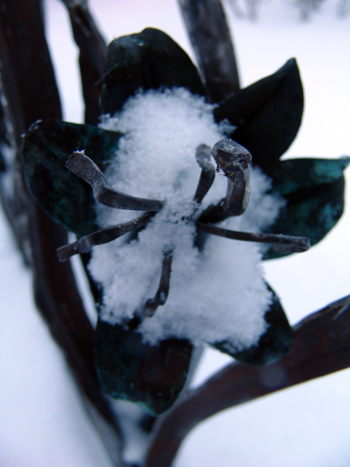
Snow covers Joseph's gate in the Dean Bond Rose Garden. photo credit: R. Robert
For example, a depiction of driftwood sited in a woodland garden may look great during the lush summer season, but it would blend into the background during the winter months along with the rest of the sticks and branches scattered throughout the woodland.
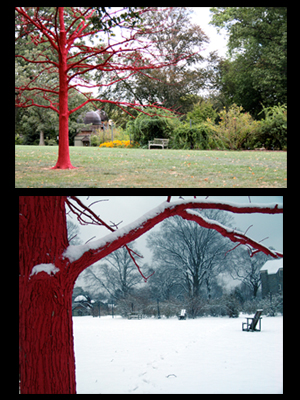
The red tree adds pop to the garden no matter the season. photo credit: D. Mattis (top) R. Robert (bottom)
The red tree is striking in the landscape whether covered in snow or surrounded by a background of green foliage.
3. Appropriateness: Art should complement the theme of the garden and reflect the gardener’s style.
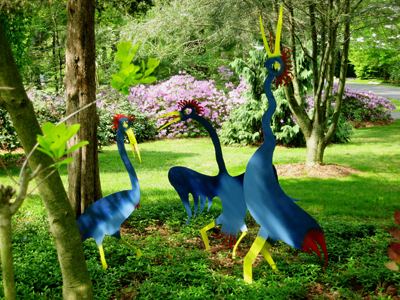
Dancing Cranes frolic in Per and Eve Thyrum's garden, Frog Hollow. photo credit:. E. Thyrum
In Eve and Per Thryum’s artist/collector’s retreat, Frog Hollow Garden, whimsical pieces by Simple are nestled among shade-loving perennials. These dancing cranes mirror the bubbly and fanciful personality of the garden owners.
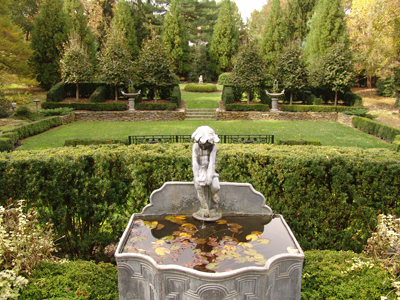
The formal boxwood gardens of Dr. Joel Wasley. photo credit: R. Robert
These assuming creatures would feel out of place in the formal garden of boxwood collector, Dr. Joel Wasley.
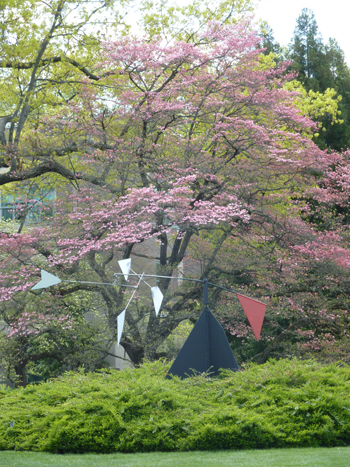
Back from Rio by Alexander Calder is highlighted by Cornus florida var. rubra pink blooms. photo credit: C. Sawyers
When art and gardens come together, the possibilities for artistic inspiration abound. For inspiration on how to add art to your garden, follow the self-guided tour of our permanent and temporary art installations. They range from the size of a cat to a small bus; from abstract modernistic pieces to representational functional elements in the landscape; and from classic subjects to ephemeral and whimsical expressions.





ann ainsworth
Posted at 15:36h, 12 AprilNice job, Becky…a
Becky Robert
Posted at 07:26h, 17 AprilThanks Ann. It was fun learning more about the relationship between art and garden for this piece.
I am glad you enjoyed it, Christine. Feel free to stop by the Scott Arboretum offices when you visit. We can give you some more great tips for seeing the art on campus.
Becky
Christine Darnell
Posted at 19:29h, 12 AprilGreat article and pictures! I am looking forward to visiting and seeing the art!